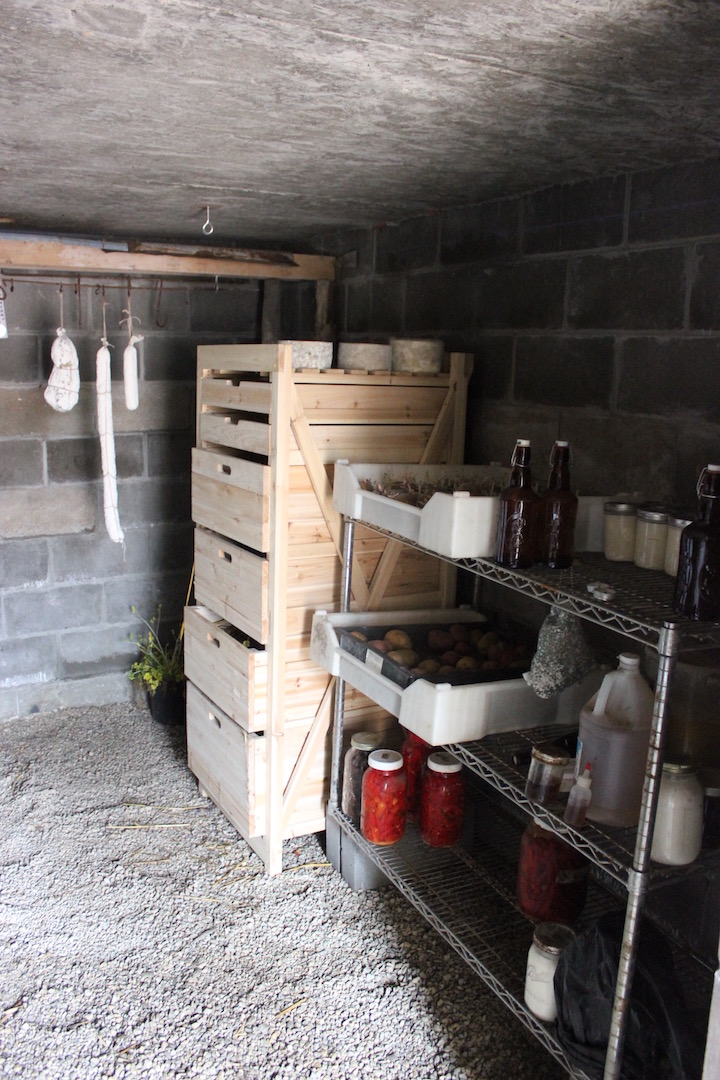
The Do's and Don'ts of Building A Root Cellar
How to Build Your Own Root Cellar for Your Harvest If you have a naturally cool and damp basement then you probably can make do with storing things down there, but for us, we don’t have a basement and there is no place in our house that is consistently cool enough to keep certain things from spoiling. Which is why you might want to consider building a root cellar. Root cellars allow a deeper, more satisfying food experience for the right kind of person. It’s all part of the grass roots movement to create a more direct connection between farm field and home dinner table. The food storage capacity of a root cellar makes local eating possible like nothing else can. Tired of eating soulless california carrots all year long? explore the local farmers market scene, then stock up on heirloom varieties of carrots, beets, potatoes, apples and dozens of other foods when the harvest comes in. Did you know you can dig cabbage out of the ground in the fall, then temporarily “plant” the root attached to each head in soil-filled tubs to keep fresh and vibrant all winter long? a root cellar is the space to make
read more →
Storage For Your Garden's Bounty
On This Page 10 Tips for Fruit and Vegetable Storage in a Root Cellar Fruit and Vegetable Storage Chart 10 Tips for Fruit and Vegetable Storage in a Root Cellar In this article we'll talk about 5 basic things you must include in a root cellar design, plus 10 tips for fruit and vegetable storage. There's also a printable storage guide for over 30 fruits and veggies, and links to additional information at the bottom of the post. A root cellar is a great low-cost way to store food – not just root vegetables, but other fresh produce, too. They require little to no energy to use and very little maintenance. Fruit and Vegetable Storage Chart Before you begin to build, you’ll need to figure out what conditions each of your fruits and veggies need stored at. Take a look at that chart again… anything that is of similar temperature and humidity requirements can be stored together, so long as you don’t mix anything that produces an odor with anything else (such as by keeping the odor-producers near a vent or in a sealed container), and don’t mix ethylene producing
read more →
Putting Up Your Harvest For Winter
On This Page How to Store Root Vegetables with No Root Cellar Benefits of Storing Root Vegetables Which Root Vegetables Can Be Stored? How to Store Root Vegetables without a Root Cellar Beets, Carrots, Turnips, and Parsnips How to Store Root Vegetables with No Root Cellar Storing crops in a root cellar is a great way to preserve the harvest. But if you don't have one already, don't despair. It's fairly easy to make a space to store vegetables at the proper temperature and humidity. Whether you're storing food for your homesteading family or selling to customers throughout the fall, winter and early spring, storing vegetables in a root cellar can be a key strategy in small-scale farming. A root cellar is a structure, usually underground or partially underground, used for storage of vegetables, fruits, nuts, or other foods. Its name reflects the traditional focus on root crops stored in an underground cellar, which is still often true. A wide variety of foods can potentially be stored—for weeks to months—depending on the crop and the conditions, but the structure may not always be underground. Root cellar.
read more →
Ways To Stock Your Root Cellar
On This Page Thinking of using your own canning recipe? Think again. Food Preservation Methods: Canning, Freezing, and Drying How to Go about Canning Venison: The Right Way to Preserve Deer Meat Canning Timer & Checklist App Thinking of using your own canning recipe? Think again. Rising food costs have persuaded many people to plant gardens. You may be thinking about preserving your harvest for the first time—or dusting off old canning equipment. Food preservation has evolved over the years. With the knowledge of what foodborne illnesses can occur, it is important to use proper procedures and tested recipes to prepare safe preserved foods. Food Preservation Methods: Canning, Freezing, and Drying Other forms of food storage preservation include canning, pickling, drying, and smoking. The advantages and disadvantages of these methods are discussed in home preservation types: advantages and disadvantages part ii. Food preservation is one of the most important inseparable parts of human life. To increase the shelf-life of the food products, application of various methods such as drying, storage in vinegar under acidic condition, canning, freezing, fermenting, dry salting, curing, smoking, and sealing have been suggested. Although the traditional methods of food preservation guarantee its safety, application of these methods
read more →
Choosing The Ideal Root Cellar
On This Page Which Type of Root Cellar is Right for You? Root Cellars: Handle Your Harvest Which Type of Root Cellar is Right for You? Does the thought of building your own root cellar seem overwhelming? yes, I can certainly understand it feeling that way. But this site can certainly help. They simplify building your root cellar to the point they break it down into 7 steps, with pictures. And i have to say that this root cellar is a good one. It appears very sturdy as it is in the ground and built with cinder block walls. It also has a dome type roof that offers a unique touch to the design. So if you are looking for sturdy and unique then this might the root cellar of your dreams. Root cellars are “cool” again (pun intended). With modern refrigeration, root cellars seemed obsolete. However, with a renewed interest in gardening, food security, and even sustainable living, root cellars have returned! here are some advantages of storing root vegetables in a root cellar and a look at a few types of root cellars. The ideal root cellar is a cool, moist, underground space for long-term storage of vegetables, fruits
read more →